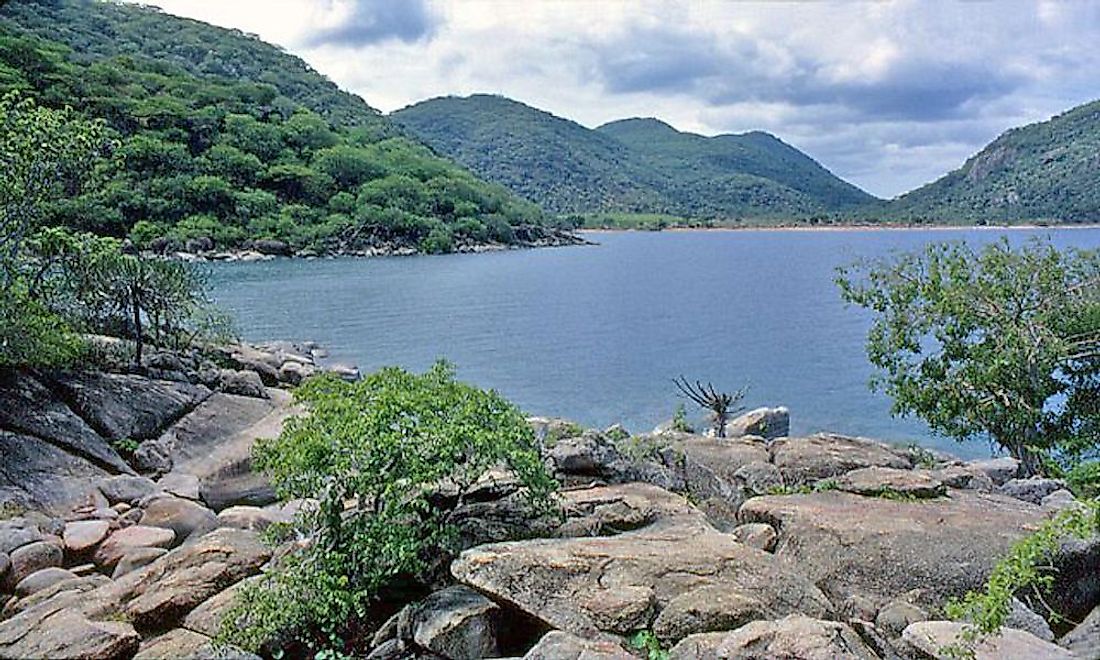What Is A Meromictic Lake?

What Is A Meromictic Lake?
A meromictic lake is a lake whose water layers do not intermix. The term “meromictic” was coined in 1935 by Austrian Ingo Findenegg. Meromictic lakes are less often found than the holomictic lakes.
What Is A Holomictic Lake?
Lakes with uniform temperature and density throughout the lake, at least at some specific time during the year, are known as holomictic lakes. Such conditions allow the lake waters to mix completely. Most lakes are holomictic in nature. Holomictic lakes can be monomictic when water layers intermix at least once a year, dimictic where mixing occurs two times a year, and polymictic when mixing occurs numerous times a year.
The Layers Of A Meromictic Lake
Unlike holomictic lakes, the layers of water in the lake might not mix for several years, even decades or centuries. Usually, these lakes are divided into three layers:
Monimolimnion Layer: The water of this layer of the lake is usually hypoxic and more saline than the rest of the lake and have little circulation.
Mixolimnion Layer: This is the top layer of the lake which behaves like a holomictic lake.
Chemocline: The middle layer between the upper and lower is called the chemocline.
Consequences Of Stable Stratification Of Meromictic Lakes
The lack of intermixing of lake waters allows almost no oxygen to reach the deepest layer of the lake. So, if the surface layer has 10 mg/L of dissolved oxygen, then the bottom layer has lower than 1 mg/L of dissolved oxygen. As a result little or no life forms survive in the monimolimnion layer. Some exceptions include the purple sulfur bacteria which use sulfur compounds to photosynthesize. The surface layer can, however, have a greater biodiversity.
What Causes The Formation Of Meromictic Lakes?
Several factors might contribute towards the formation of meromictic lakes. The lake basin is usually steep-sided and deep relative to the surface area of the lake. The salinity of the layers varies greatly with the lower layer being more saline and denser than the upper ones.
Significance To Humans
Meromictic layers are significant to researchers who can assess climatic changes and geological processes active in a region over the years by assessing the relatively undisturbed sediment composition that builds up at the bottom of the meromictic lakes.
Devastating Consequences When Waters Intermix
If the layers of a meromictic lake do intermix, it could have devastating effects on the biodiversity of the lake. Change in oxygen concentration and other factors might trigger a mass die-off of species subjected to the sudden change in conditions. Also, dissolved gasses like carbon dioxide build up over the years in meromictic lakes. A sudden intermixing of waters could also trigger a limnic eruption. One such phenomenon happened in Lake Nyos in Cameroon in 1986 that claimed the lives of 1,800 people.
Meromictic Basins Around The World
Lake Nyos in Cameroon, Lake Kivu in Rwanda, Lake Vanda in Antarctica, Zigetangcuo Lake in Tibet, Bababu Lake in the Philippines, Lake Fidler in Australia, Lac Pavin in France, Ballston Lake in the US are all examples of meromictic lakes.
Additionally, the Black Sea is considered to be the largest meromictic basin in the world. The waters of the Black Sea found below 150 feet do not mix with the layers above. Hence, nearly 90% of the volume of the deeper part of the Black Sea is anoxic in nature. The Baltic Sea and the Caspian Sea are also meromictic in nature.







